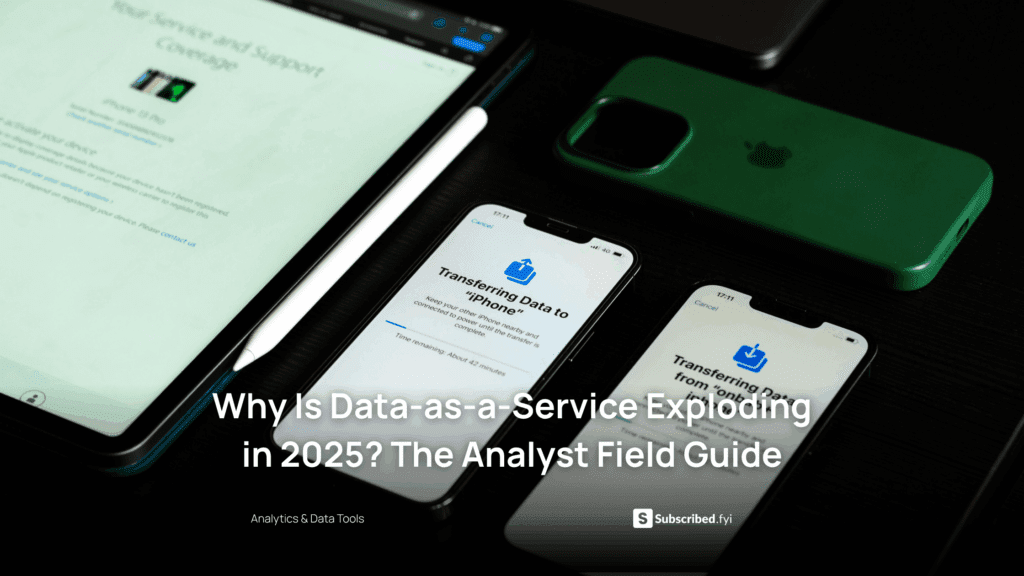Process of Conducting Competitor Analysis: Explained
- Data as a Service (DaaS) Software Marketing & Analytics


In the competitive landscape of today’s business world, conducting competitor analysis is essential for companies seeking to gain a competitive edge and achieve sustainable growth. Understanding the process of competitor analysis is crucial for businesses of all sizes, as it provides valuable insights into market dynamics, consumer preferences, and competitor strategies. In this article, we’ll explore the step-by-step process of conducting competitor analysis and highlight the importance of leveraging SaaS tools for efficient and effective analysis.
Understanding Competitor Analysis
Competitor analysis is the process of identifying, assessing, and understanding the strengths and weaknesses of competitors within a specific industry or market segment. By analyzing competitors’ strategies, products, pricing, marketing tactics, and market positioning, businesses can identify opportunities and threats, refine their own strategies, and make informed decisions to stay ahead of the competition.
Steps in Conducting Competitor Analysis
- Identifying Competitors: The first step in competitor analysis is to identify direct and indirect competitors operating within the same industry or targeting similar customer segments. This involves researching competitors’ products, services, target markets, and geographic presence.
- Gathering Information: Once competitors are identified, businesses need to gather relevant information about each competitor, including their market share, financial performance, product features, pricing strategies, distribution channels, and marketing campaigns. This information can be collected from various sources, such as company websites, industry reports, press releases, social media, and customer reviews.
- Analyzing Strengths and Weaknesses: After gathering information, businesses should analyze competitors’ strengths and weaknesses relative to their own strengths and weaknesses. This involves assessing factors such as product quality, brand reputation, customer service, innovation capabilities, and cost structure.
- Assessing Market Positioning: Understanding competitors’ market positioning is crucial for businesses to identify gaps in the market and differentiate their products or services effectively. By analyzing competitors’ positioning strategies, businesses can identify opportunities to carve out a unique value proposition and attract target customers.
- Monitoring Competitive Trends: Competitor analysis is an ongoing process that requires businesses to continuously monitor competitive trends and developments in the market. This involves tracking competitors’ product launches, pricing changes, marketing campaigns, customer feedback, and industry news to stay informed and responsive to changes in the competitive landscape.
Relevant SaaS Products for Competitor Analysis
To streamline the process of competitor analysis and gain actionable insights, businesses can leverage a variety of SaaS products designed for competitive intelligence and market research. Here are some relevant SaaS products that can facilitate the process of competitor analysis:
1. SEMrush
SEMrush is a comprehensive marketing toolkit that provides insights into competitors’ online visibility, search rankings, advertising strategies, and backlink profiles. With features such as domain analytics, keyword research, and competitive analysis, SEMrush helps businesses identify opportunities and threats in the digital landscape.
2. Ahrefs
Ahrefs is a powerful SEO toolset that enables businesses to analyze competitors’ organic search traffic, backlink profiles, and content strategies. With features such as Site Explorer, Content Explorer, and Keyword Explorer, Ahrefs helps businesses uncover valuable insights for improving their own search engine rankings and content marketing efforts.
3. SpyFu
SpyFu is a competitive intelligence tool that allows businesses to spy on their competitors’ online advertising campaigns, keyword rankings, and ad copy variations. By analyzing competitors’ PPC (pay-per-click) campaigns and SEO strategies, SpyFu helps businesses optimize their own digital marketing campaigns for better results.
4. SimilarWeb
SimilarWeb is a market intelligence platform that provides insights into competitors’ website traffic, audience demographics, referral sources, and engagement metrics. With features such as website analysis, audience insights, and industry benchmarks, SimilarWeb helps businesses understand their competitive landscape and identify opportunities for growth.
5. Crayon
Crayon is a competitive intelligence platform that tracks competitors’ digital footprint across websites, social media, and online communities. By monitoring competitors’ online activities, content updates, and customer interactions, Crayon helps businesses stay ahead of the competition and adapt their strategies in real-time.
Leveraging Subscribed.FYI for Competitive Advantage
By utilizing Subscribed.FYI, businesses can access a centralized platform that provides comprehensive information about SaaS tools designed for competitor analysis and market research. Subscribed.FYI offers insights into various SaaS products, including SEMrush, Ahrefs, SpyFu, SimilarWeb, and Crayon, allowing businesses to compare, evaluate, and select the best tools for their specific requirements.
Subscribed.FYI Deals for Competitive Intelligence Tools
For exclusive deals and discounts on competitive intelligence tools like SEMrush, Ahrefs, SpyFu, SimilarWeb, and Crayon, businesses can explore Subscribed.FYI Deals. By signing up for free, users can unlock savings on SaaS products that streamline competitor analysis and market research, ultimately empowering businesses to make informed decisions and gain a competitive advantage in their industry.
Conclusion
The process of conducting competitor analysis is essential for businesses seeking to understand their competitive landscape, identify opportunities, and mitigate threats. By following a structured approach to competitor analysis and leveraging SaaS tools for market research, businesses can gain valuable insights into competitors’ strategies, strengths, and weaknesses, ultimately informing their own strategic decisions and driving business success.
Relevant Product Links:











